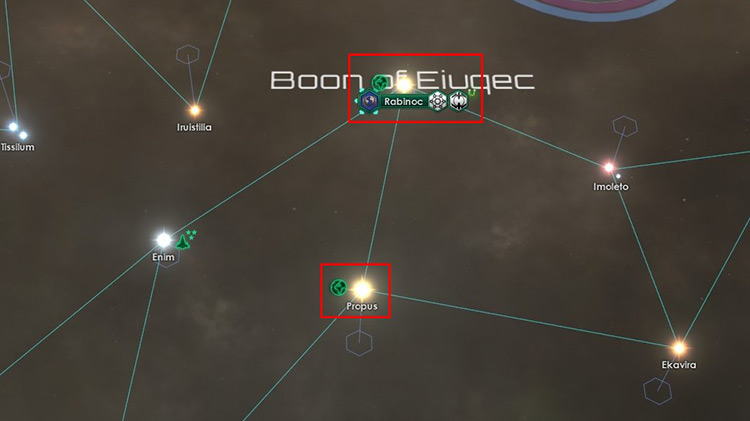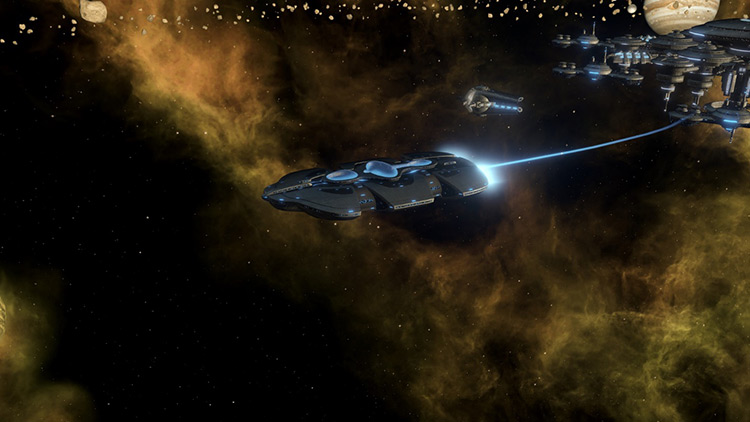But not all planets you can colonize are good or worthwhile. You need to make sure that your new colony won’t become a liability to your empire’s growth.
What’s The Best Time to Colonize?
New colonies are always good to have in Stellaris. They’re a good source of population, or “Pops”, which in turn improves the productivity of your empire through Jobs. So to the question of “when”, the best answer would be “as soon as you can”. However, you can’t just pop a colony ship every time you see a colonizable planet. Colony ships are a huge investment in the early game. And landing them on an unsuitable planet, even if the planet could have huge resources, will have penalties. In worst case scenarios, your new planet will waste resources more than they could produce them. So how do we know if a planet is good for colonization? That’s where habitability rating comes in.
What is Habitability?
In Stellaris, each species will have their preferred living conditions. There are 3 types of climates, and with each climate type, there are 3 more basic planet types. Here’s a short list of the basic planet types and what type of climate they have: To understand this better we can use an example: Humans in Stellaris prefer the “Continental” planet type, which has a “Wet” climate. All Continental planets will have 80% habitability for Humans. But since Continental planets have a “Wet” climate, Humans can still be productive on other Wet planets, like the Ocean and Tropical planets. Other Wet planets aside from the Continental type will give Humanity a 60% Habitability rating. Every other basic planet type will give Humans a 20% Habitability rating. Note: Systems with a habitable planet will have indicators next to their name. Each indicator will have a different color depending on the Habitability of the planet or planets in it. So when in doubt, only colonize the “green” planets.
Why Planet Habitability Matters
So what happens if a species colonizes a planet they aren’t comfortable living on? Here are the effects of lower Habitability in a colony. For every 1% below the ideal 100% Habitability, you get:
Increased Amenity usage by 1% (+100% at 0% Habitability) Decreased Job Output by 0.5% (-50% at 0% Habitability) Decreased Population Growth by 0.5% (-50% at 0% Habitability)
Simply put, the less habitable a planet is, the higher its upkeep is, and the less it produces. Note: Planets with low Habitability can also trigger unique planetary events, which can either be good or bad.
How To Colonize a Planet
There are 2 ways you can colonize a planet. Both of them will require a Colony Ship or a Shipyard that can build you a Colony Ship.
The First Approach
Step 1: Select your Shipyard. You should start the game with one already made in your capital system. Step 2: Left-click on the Colony Ship and wait for it to finish. Step 3: Once completed, select your new Colony Ship. Step 4: While the ship is selected, navigate to the planet you want to colonize. Step 5: Right-click on the planet then select “Colonize Planet”.
The Second Approach
Step 1: If you haven’t built a Colony Ship yet, you can use the second approach. Step 2: Select your desired planet. The planet overview should pop up (screenshot below) Step 3: Select the “Colonize” button. The Colonize menu should pop up. Step 4: Select your preferred species. Note: If you have more than one species in your empire that have the right to colonize planets, then you can select them in the Colonize menu as well. Step 5: A Colony Ship will automatically be built in the closest Shipyard to the target planet. Step 6: Once built, the Colony Ship will colonize your target world automatically. Just note that you can’t establish a colony on a planet that has an anomaly or a primitive species living on it.


